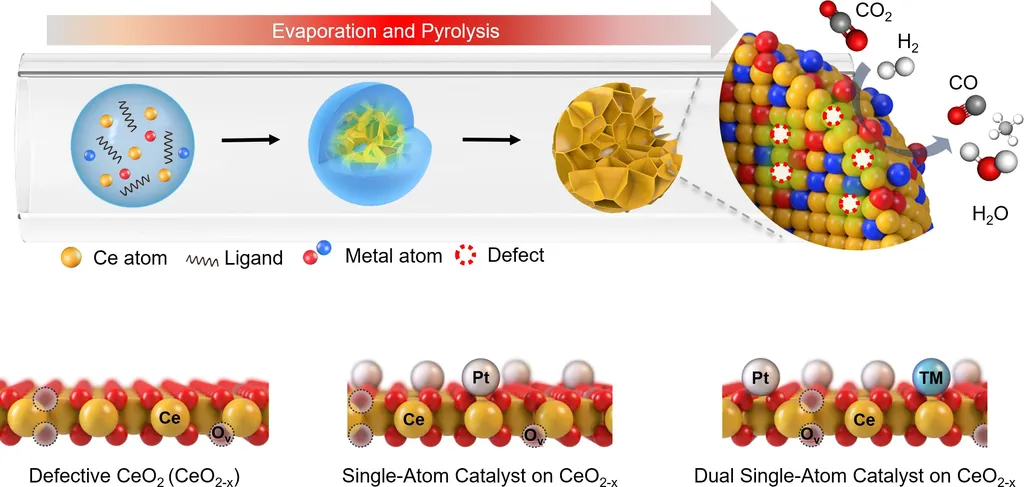In a significant stride towards more efficient and cost-effective carbon capture and utilization (CCU) technologies, researchers have developed a novel bifunctional material that could revolutionize the energy sector’s approach to carbon mitigation. The study, led by Wenqi Fan from the CNPC Research Institute of Safety and Environmental Technology and Beijing Forestry University, was recently published in the journal “Carbon Capture Science and Technology.”
The team’s innovation centers around a composite material, dubbed KR3, which combines nickel nanoparticles with KNaTiO3 derived from low-cost natural rutile sand. This bifunctional material excels in both capturing CO2 and converting it into CO through hydrogenation. “The KR3 material showed a remarkable CO2 conversion rate of 76.7%, with near-perfect selectivity towards CO,” Fan explained. “Moreover, it demonstrated robust cyclic stability over 10 cycles, indicating its potential for long-term use in industrial applications.”
The implications for the energy sector are substantial. Current CCU technologies often struggle with high costs and limited efficiency, but the KR3 material offers a promising alternative. Its high CO2 sorption capacity and superior conversion activity could make it a game-changer for industries looking to reduce their carbon footprint. “The pelletized form of the material retained 84% of its CO2 conversion capability, even in the presence of O2, which is a significant step forward for practical applications,” Fan added.
The research also shed light on the mechanisms behind CO2 hydrogenation, revealing that both the redox mechanism and the formate reaction pathway play crucial roles. This understanding could pave the way for further advancements in the field, as scientists work to optimize these processes for even greater efficiency.
The study’s findings not only provide crucial insights for advancing solid CO2 sorbents for flue gas capture and conversion but also demonstrate significant potential for practical carbon mitigation. As the world grapples with the urgent need to reduce greenhouse gas emissions, innovations like the KR3 material offer a beacon of hope for a more sustainable future.
The research was published in the journal “Carbon Capture Science and Technology,” a testament to the growing importance of this field in the global effort to combat climate change. As the energy sector continues to evolve, the development of cost-effective and efficient bifunctional materials like KR3 will be pivotal in shaping the future of carbon capture and utilization technologies.

